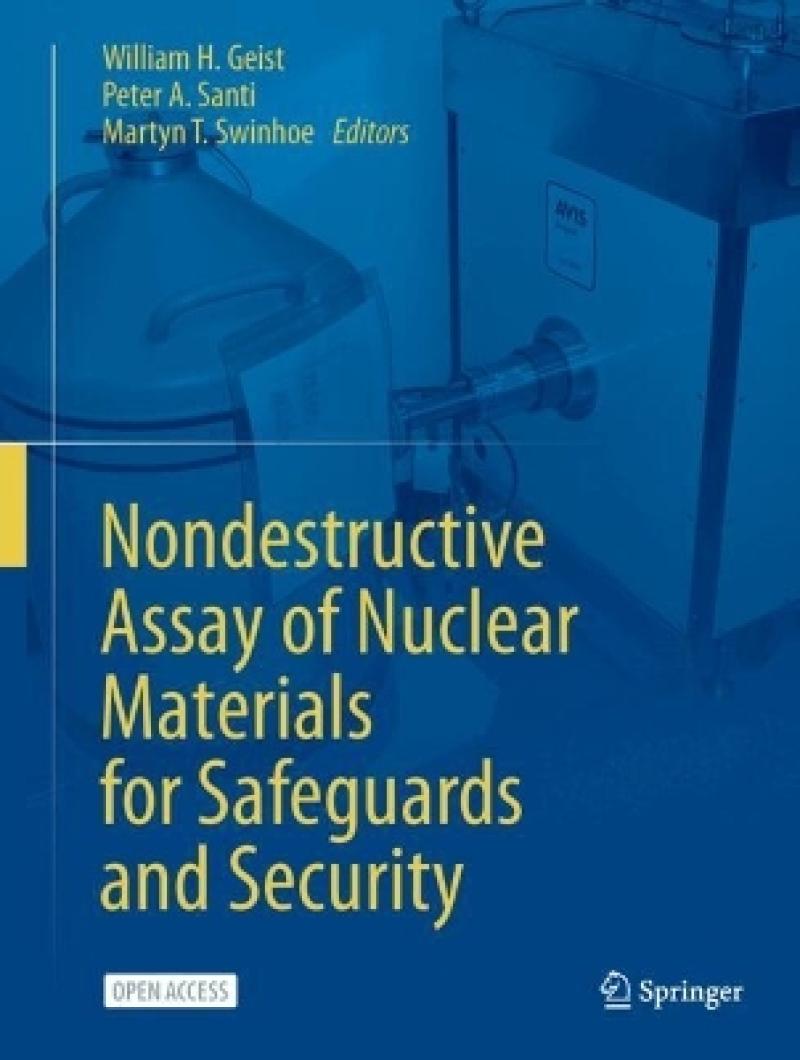This open access book describes the nondestructive assay techniques that are used for the measurement of nuclear material (primarily uranium and plutonium) for nuclear material accountancy purposes. It is a substantial revision to the so-called PANDA manual that has been a standard reference since its publication in 1991. The book covers the origin and interactions of gamma rays and neutrons as they affect nuclear measurements and also describes the theory and practice of calorimetry. The book gives a description of many instruments based on these techniques that are applied in the field.
Although the basic physics has not changed since PANDA was first published, the last thirty years have seen many advances in analysis methods, instrumentation, and applications. The basic descriptions of the origin and interactions of radiation have been updated and include newer references. There have been extensive revisions of the description of gamma detection methods, attenuation correction procedures, and analysis methods, including for the measurement of uranium enrichment and the determination of plutonium isotopic composition. Extensive revisions and additions have also been made to the description of neutron detectors and to the explanation of neutron coincidence techniques. The chapter on neutron multiplicity techniques is a new addition to this edition. The applications of gamma and neutron techniques have been completely overhauled to remove obsolete systems and to include many current applications. The values of, and references to, nuclear data have been updated. This updated edition is an essential reference for academic researchers and practitioners in the field.
This is an open access book.
This open access book describes the nondestructive assay techniques that are used for the measurement of nuclear material (primarily uranium and plutonium) for nuclear material accountancy purposes.
Chapter 1. The Role of Nondestructive Assay in Safeguards, Security, and Safety.- Chapter 2. The Origin of Gamma Rays.- Chapter 3. Gamma-Ray Interactions with Matter.- Chapter 4. Gamma-Ray Detectors.- Chapter 5. Instrumentation for Gamma-Ray Spectroscopy.- Chapter 6. Attenuation Correction Procedures.- Chapter 7. General Topics in Passive Gamma-Ray Assay.- Chapter 8. The Measurement of Uranium Enrichment.- Chapter 9. Plutonium Isotopic Composition by Gamma-Ray Spectroscopy.- Chapter 10. Gamma-Ray NDA Applications & Techniques.- Chapter 11. Densitometry.- Chapter 12. X Ray Fluorescence.- Chapter 13. The Origin of Neutron Radiation.- Chapter 14. Neutron Interactions with Matter.- Chapter 15. Neutron Detectors.- Chapter 16. Principles of Singles Neutron Counting.- Chapter 17. Principles of Neutron Coincidence Counting.- Chapter 18. Principles of Neutron Multiplicity.- Chapter 19. Passive Neutron Instrumentation and Application.- Chapter 20. Active Neutron Instrumentation and Applications.- Chapter 21. Spent Fuel Measurements.- Chapter 22. Perimeter Radiation Monitors.- Chapter 23. Principles of Calorimetric Assay.- Chapter 24. Calorimetric Assay Instruments.
This open access book describes the nondestructive assay techniques that are used for the measurement of nuclear material (primarily uranium and plutonium) for nuclear material accountancy purposes. It is a substantial revision to the so-called PANDA manual that has been a standard reference since its publication in 1991. The book covers the origin and interactions of gamma rays and neutrons as they affect nuclear measurements and also describes the theory and practice of calorimetry. The book gives a description of many instruments based on these techniques that are applied in the field.
Although the basic physics has not changed since PANDA was first published, the last thirty years have seen many advances in analysis methods, instrumentation, and applications. The basic descriptions of the origin and interactions of radiation have been updated and include newer references. There have been extensive revisions of the description of gamma detection methods, attenuation correction procedures, and analysis methods, including for the measurement of uranium enrichment and the determination of plutonium isotopic composition. Extensive revisions and additions have also been made to the description of neutron detectors and to the explanation of neutron coincidence techniques. The chapter on neutron multiplicity techniques is a new addition to this edition. The applications of gamma and neutron techniques have been completely overhauled to remove obsolete systems and to include many current applications. The values of, and references to, nuclear data have been updated. This updated edition is an essential reference for academic researchers and practitioners in the field.
This is an open access book.
Produktdetaljer
Om bidragsyterne
Dr. Martyn T. Swinhoe has worked in Europe and the USA on the development of neutron and gamma techniques for the measurement of uranium and plutonium for nuclear materials accountancy. He has been involved with implementation of instruments and training of nuclear inspectors and operators. He was awarded the Vincent J. DeVito Distinguished Service Award in 2017 from the Institute for Nuclear Materials Management.
Dr. Peter Santi has been involved in both the development and deployment of Non-Destructive Assay techniques for over 20 years. In addition, he has either organized or been an instructor for over 50 Non-Destructive Assay training courses at both Los Alamos National Laboratory (LANL) and at the International Atomic Energy Agency. In recognition of his efforts in running the Safeguards Technology Training Program, he was awarded a LANL Distinguished Performance Award in 2011.
Dr. William Geist is a senior staff scientist at Los Alamos National Laboratory where he is a subject matter expert on nondestructive assay techniques for safeguards and security for over 25 years. He has served as the director of the Safeguards and Security Technology Training Program at LANL and worked at the IAEA in Vienna, Austria training inspectors on NDA technologies.

